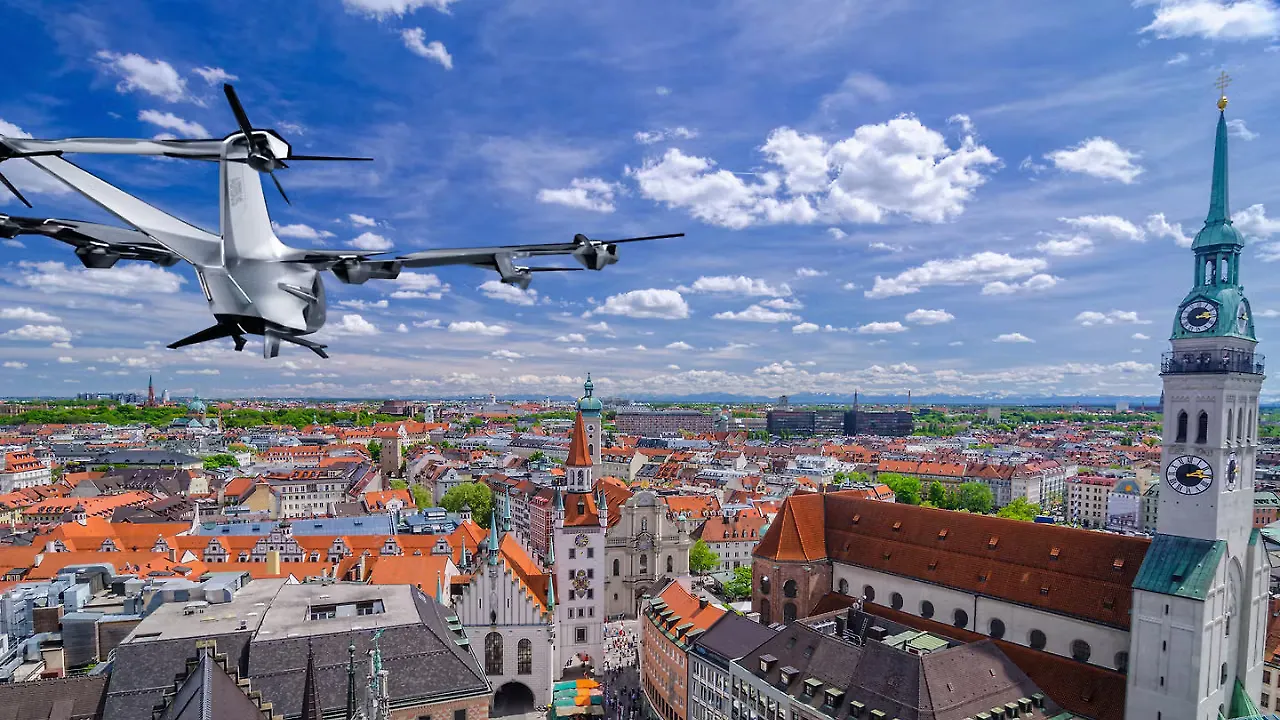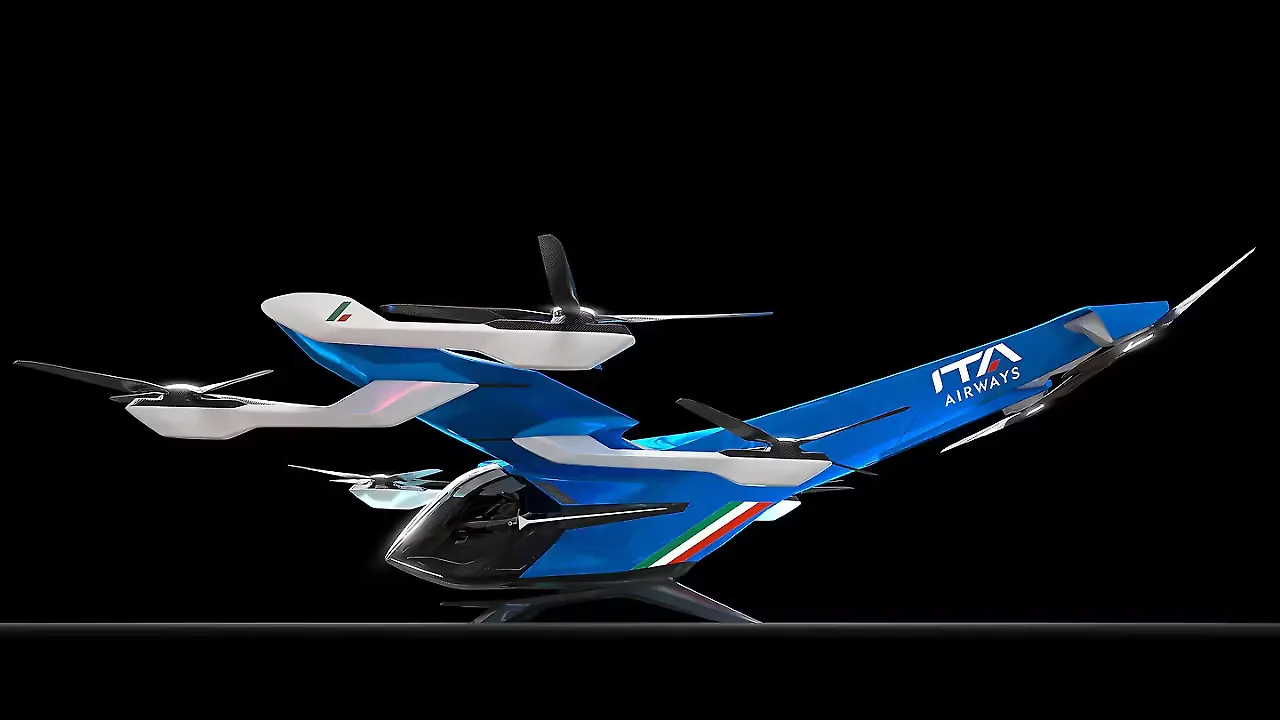
Airbus is moving ahead on laying the groundwork for meeting future air mobility requirements by creating the Air Mobility Initiative (AMI) in Germany.
The incorporation of leading companies, universities, research institutions, and municipalities under Airbus’ leadership will contribute to the development of advanced air mobility, starting with Germany. The members of the AMI include Airbus, City of Ingolstadt, Deutsche Bahn, Deutsche Flugsicherung, Diehl Aerospace, Droniq, Munich Airport, Red Cross, and Telekom.
The recently announced initiative will create joint projects centred around three main areas: electric vertical take-off and landing (eVTOL) aircraft, unmanned traffic management (UTM) services, airport & city integration, including vertiports.
The knowledge gained from these research projects will be carried through to a demonstration project under real conditions with eVTOLs, and work on the individual AMI projects commenced this January. The test flights of the demonstration project will be carried out in the region around the German city of Ingolstadt.
Markus May, Head of Operations, Urban Air Mobility, Airbus, said, 'In many parts of the world, eVTOLs will offer a whole new mobility service in the near future. Airbus and the AMI partners are aware that the introduction of such a system requires the cooperation of many players with different competencies. Our goal is to build a transport service that benefits society and this is what we are setting up here in Bavaria.'
This series of research projects will be an essential step towards making urban air mobility (UAM) within and between cities a reality. Total funding for the programme during 2022-25 will be around €86 million, including the industry's own funds. It also includes €17 million and €24 million in funding from the Free State of Bavaria and the German Federal Government, respectively.
Airbus will lead the vehicle stream along with Diehl Aerospace, the University of Stuttgart and other partners. The safe and efficient flight of vehicles on their routes in and outside cities will come under the purview of UTM, which will be handled by Droniq, Airbus, f.u.n.k.e. Avionics, SkyFive, BrigkAir, DFS, Telekom, Universities from Munich and Hamburg and other partners. To further plans for the creation of vertiports, AMI will work on take-off and landing sites for the aircraft and their integration into airports and cities and work alongside Munich Airport, Deutsche Bahn, Bauhaus Luftfahrt, Airport Nürnberg, Universities of Ingolstadt and Munich.

Moving Fast
European nations are already moving fast to collaborate on UAM. In April, Airbus announced the inking of a Memorandum of Understanding with Italy’s flag carrier, ITA Airways. Both companies will work together to identify strategic use cases for emission-free mobility solutions, with the eventual goal of creating tailored UAM services. “With this agreement, our partnership expands to the segment of UAM for a wider, customer-centric, innovative and sustainable offer for our customers,” said Alfredo Altavilla, Chairman of ITA Airways. The airline is an existing operator of Airbus aircraft, and recently, it directly purchased seven A220s, 11 A320neos and 10 A330neos. It also has A350s on order, the first of which joins the ITA’s fleet this summer.
Airbus has partnered with ITA Airways as part of its efforts to additional onboard partners for the safe and sustainable launch of operations with the CityAirbus NextGen eVTOL aircraft, which is currently in development.
Guillaume Faury, CEO, Airbus, said the agreement with ITA Airways was an opportunity for the airframer to advance new air mobility solutions for zero-emission vertical flight in support of our cities and communities later this decade. A fully electric vehicle equipped with fixed wings, and a V-shaped tail, the CityAirbus NextGen features eight electrically powered propellers as part of its uniquely designed distributed propulsion system. It can accommodate up to three passengers with a pilot and is being developed to fly with an 80 km operational range and reach a cruise speed of 120 km/h.
Forging Ahead
UAM development has been rapid, and products in this sector did not even exist 4-5 years ago. The pace of development has accelerated in recent years, with new entrants racing to offer a new mobility service and existing aerospace companies looking to these products to reduce emissions in aviation across their product range. Companies like Airbus are also creating smaller and more dynamic teams to develop their UAM capability, allowing them to work as fast start-ups with simplified processes and leaner working methods. This has resulted in shorter developmental timelines, with one of the goals being to learn as much as possible from a clean sheet design in as little time as possible.
Airbus has been exploring the prospects of electric propulsion for new kinds of aerial vehicles since 2014 and deliberately chose two different configurations for its early technology demonstrators. While Vahana was a single passenger vehicle with a tilt-wing configuration capable of flying for 20 minutes within a 50 km range, Airbus’s CityAirbus NextGen eVTOL prototype was designed to carry four passengers (including the pilot) over an operational range of 80 km with a top speed of 120km/h. CityAirbus NextGen was unveiled in September 2021, and the first flight of a prototype is planned for 2023. Its objective was to test a distributed electric propulsion system for this weight category of eVTOLs.

Distributed electric propulsion is likely to transform how future air vehicles are powered, and various vehicle configurations are already in development. Airbus is also jointly developing the central flight control computers for the CityAirbus NextGen in partnership with Thales and Diehl Aerospace which will combine extraordinary computing power with a lightweight design. Diehl, Thales and Airbus are developing their system that will be integrated into a dissimilar architecture to comply with the new EASA regulations for eVTOLs, which calls for redundancy of the computers for vehicle safety. The primary computing system is the responsibility of Thales, while Diehl is developing the secondary flight control computer. The second independent flight control computer monitors the data of the primary computer system permanently and can also take over the flight control itself.
Thales has a longstanding partnership with Airbus, having supplied the systems for the first-ever fly-by-wire commercial airliner, Airbus’s A310, over four decades ago.
Another key enabler for a commercially viable transport service will be autonomous operation, and this is another area where extensive work is being done. Airbus has been working to turn the goal of autonomous flight into reality by harnessing powerful computer technology and increasing levels of autonomy to optimise flight trajectories, primarily on manned aircraft. A system is considered autonomous when it can take decisions without human acknowledgement or initiation. Airbus has also been working on project Eagle (Eye for Autonomous Guidance and Landing Extension) since 2017 to combine high-performance power for image-processing algorithms enhancing image recognition capabilities for aircraft and providing a complete vision system. Originally an Airbus research project to federate an entire helicopter’s image processing functions and feed them into the avionics system, thus improving the crew’s situation awareness and reducing the pilot workload, it was also designed to be integrated into a variety of existing and future Airbus VTOLs.